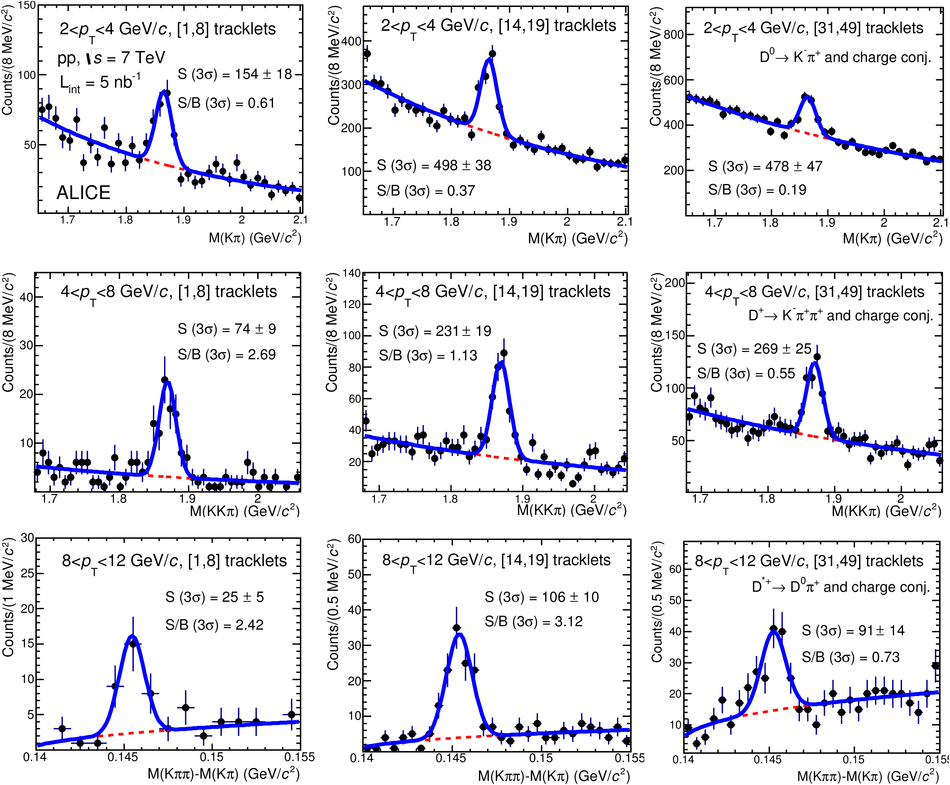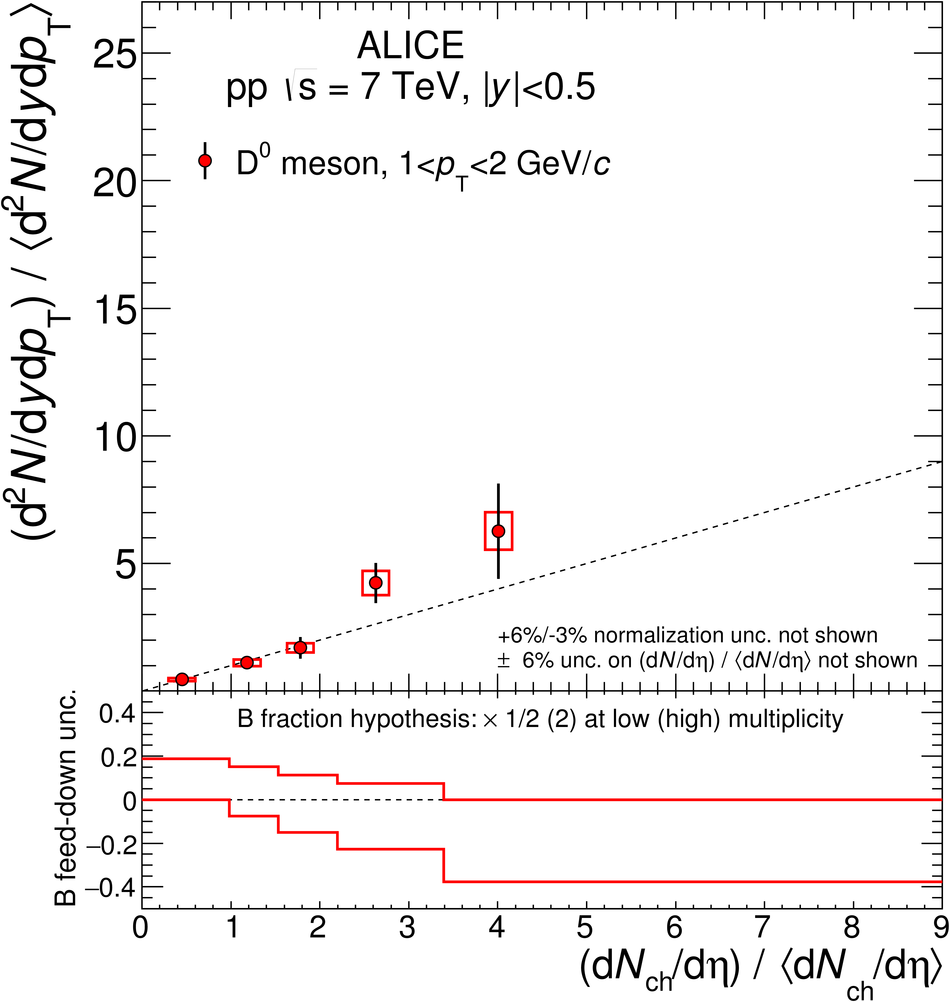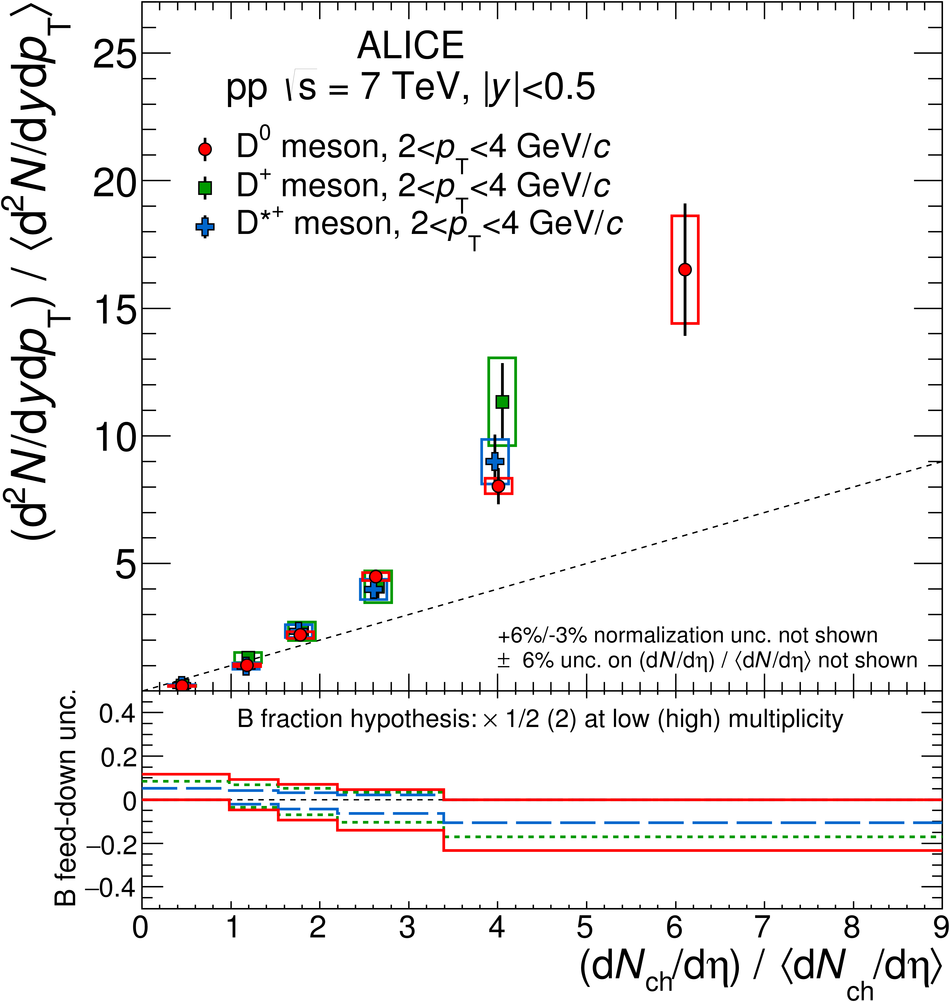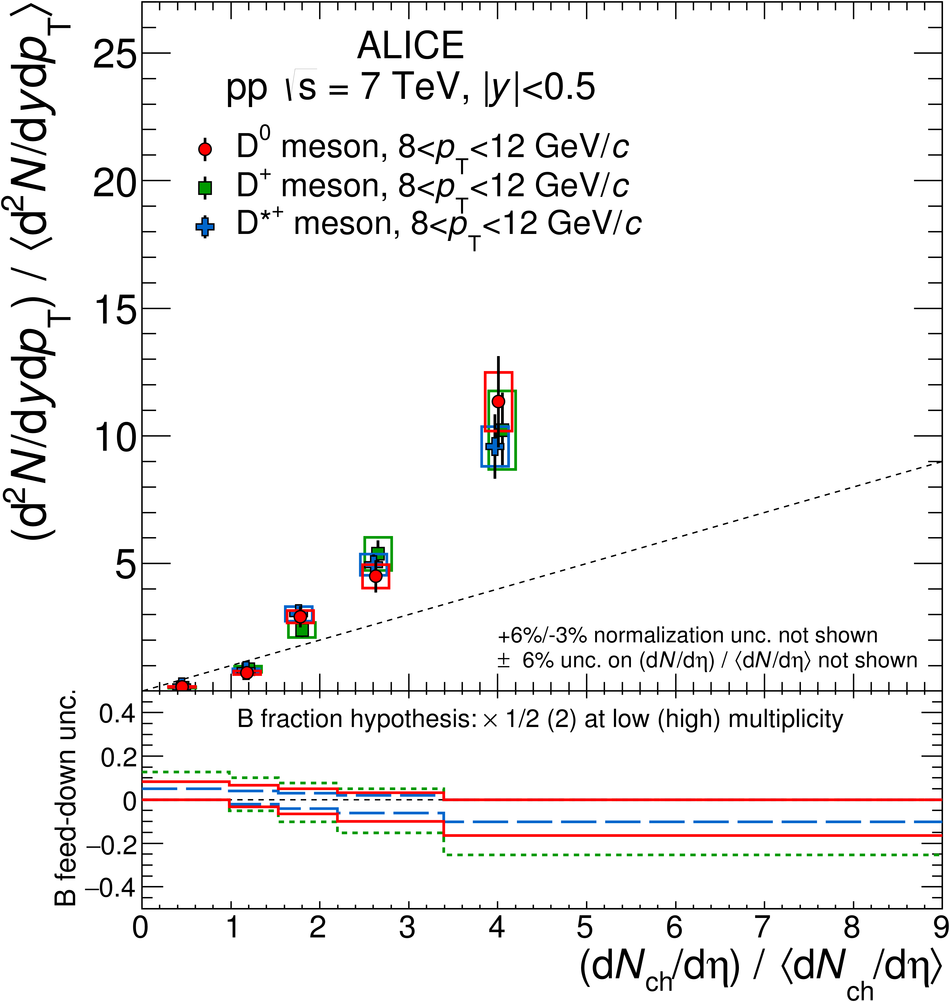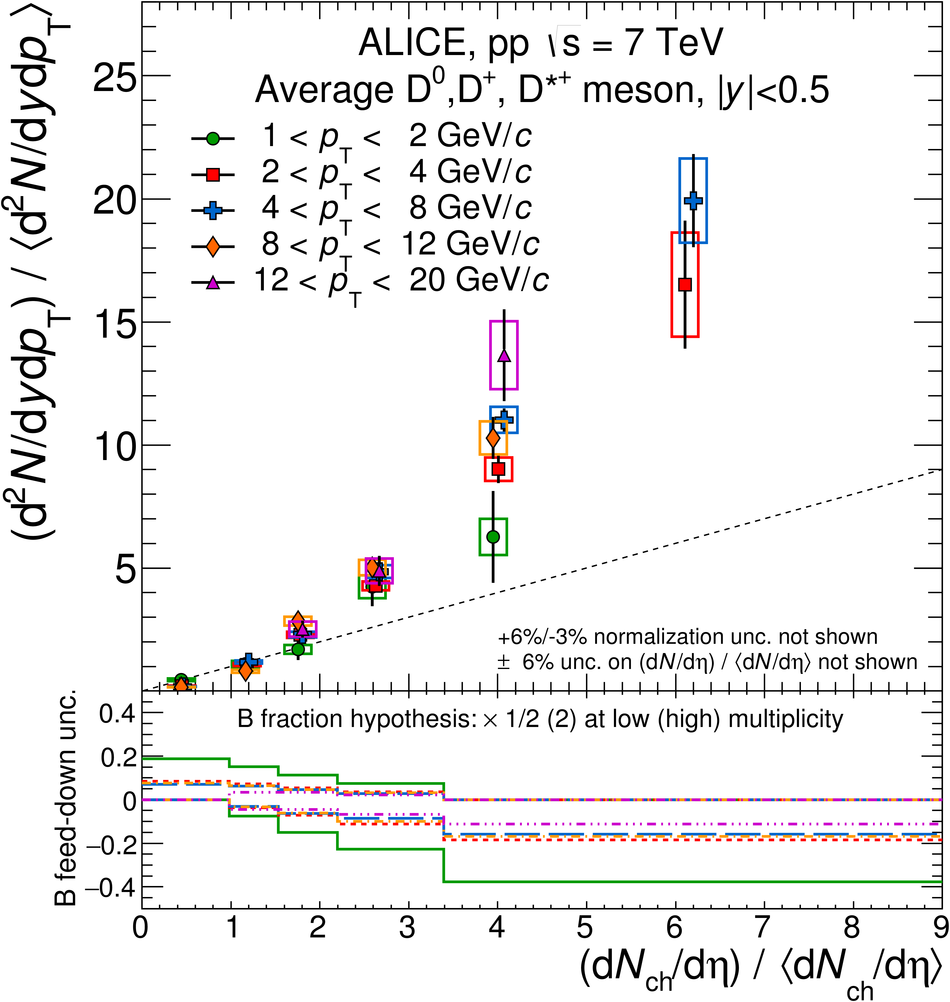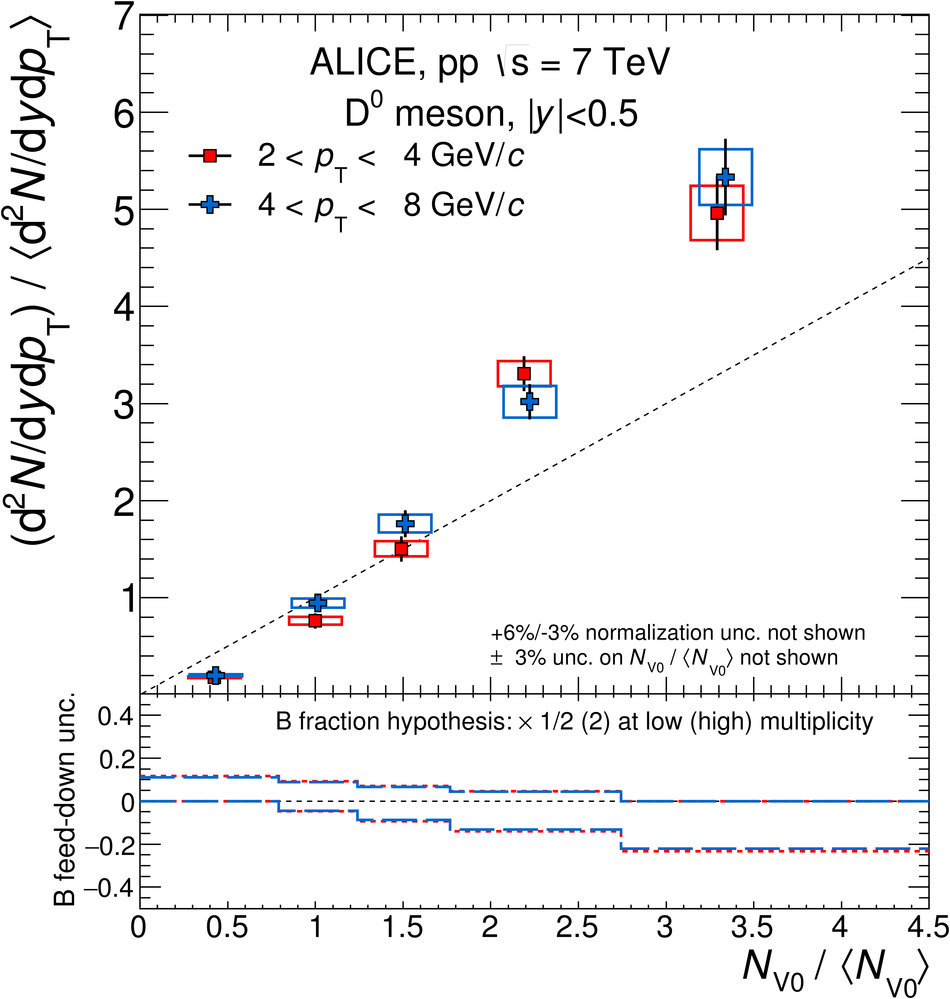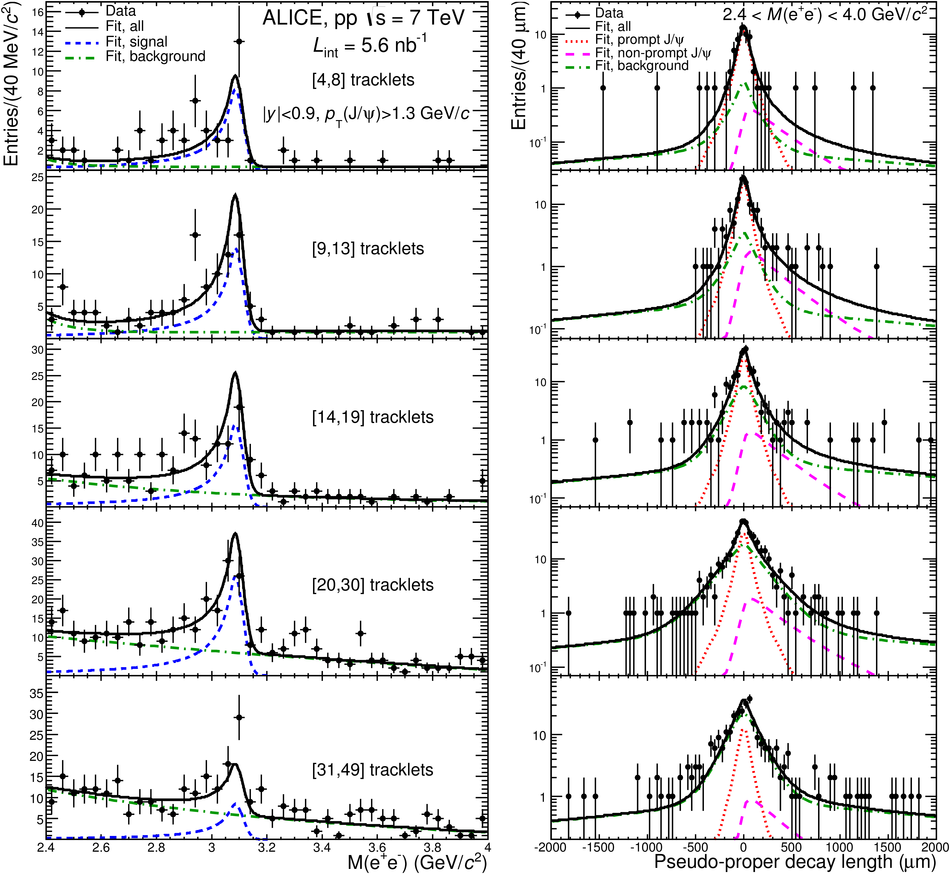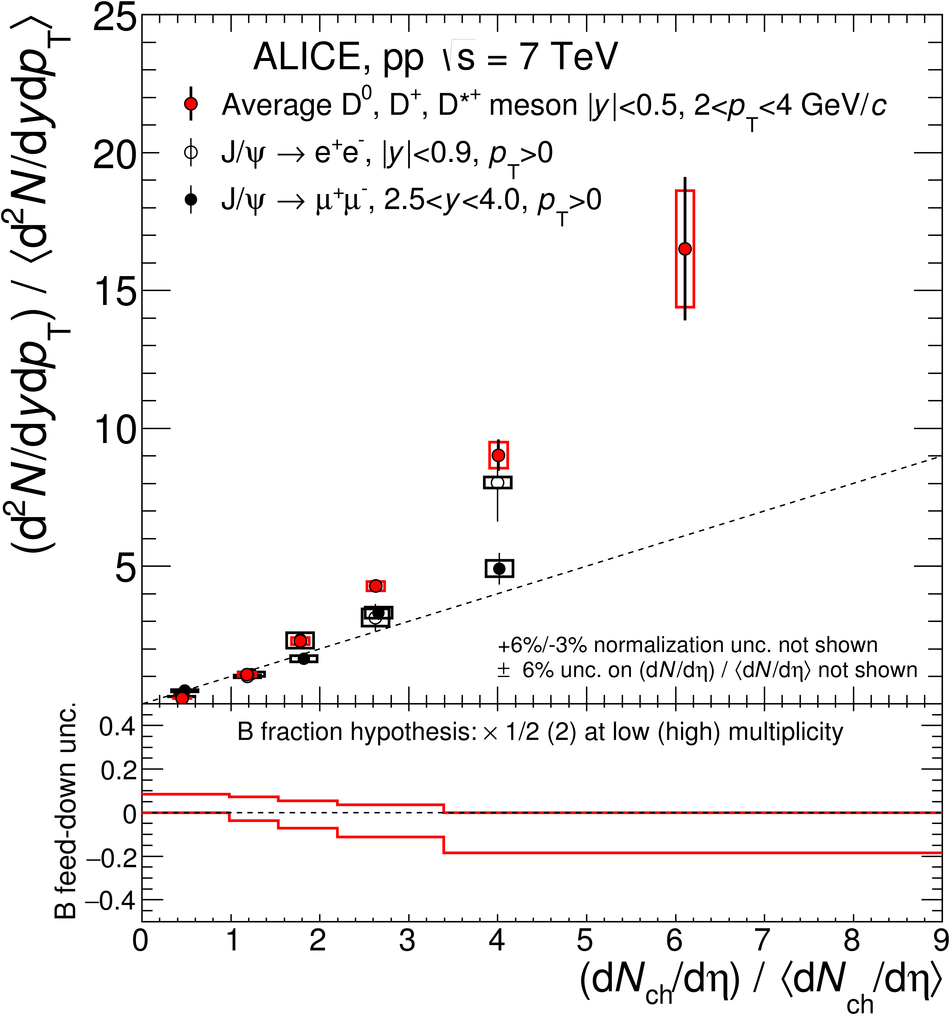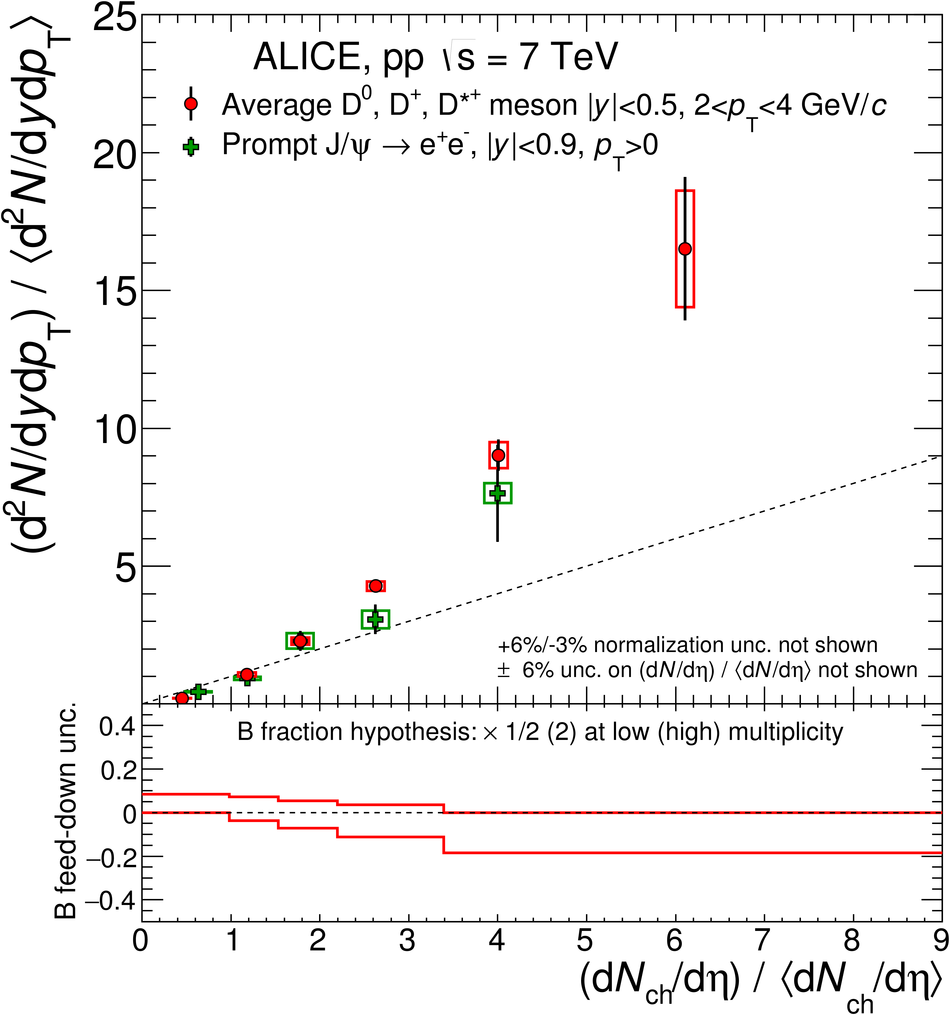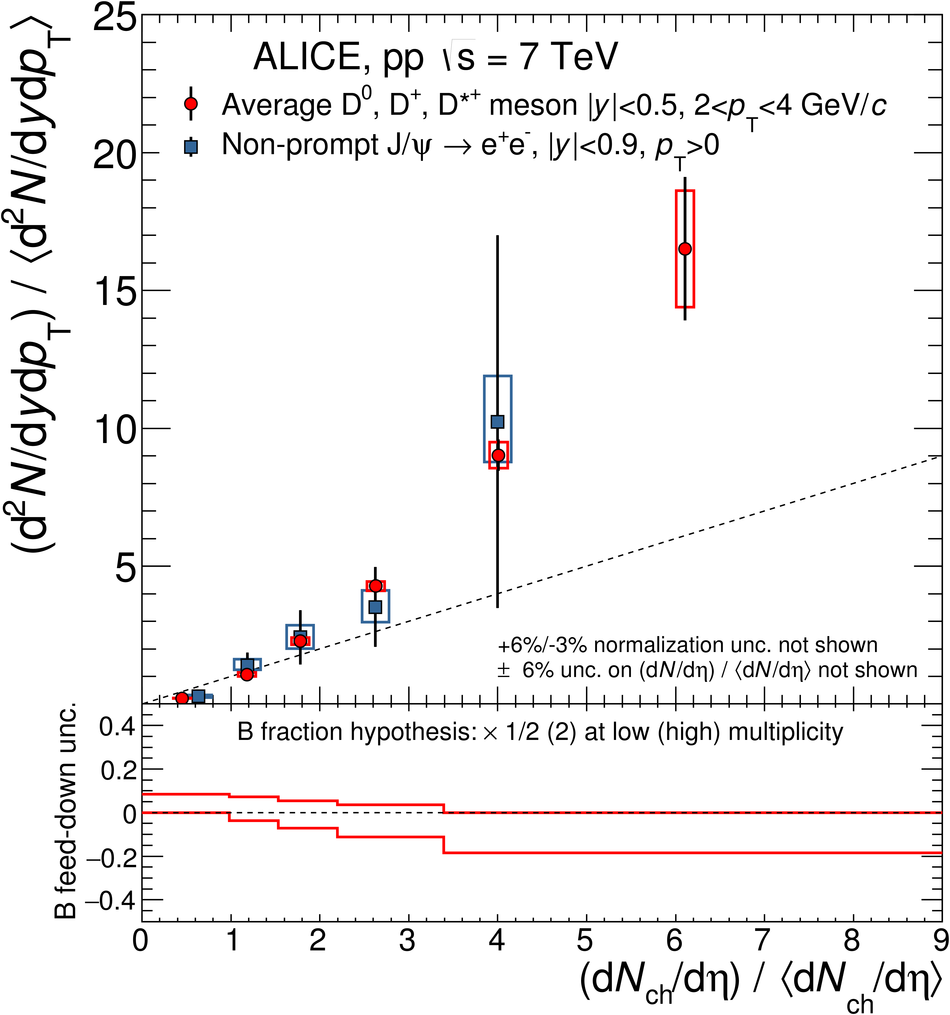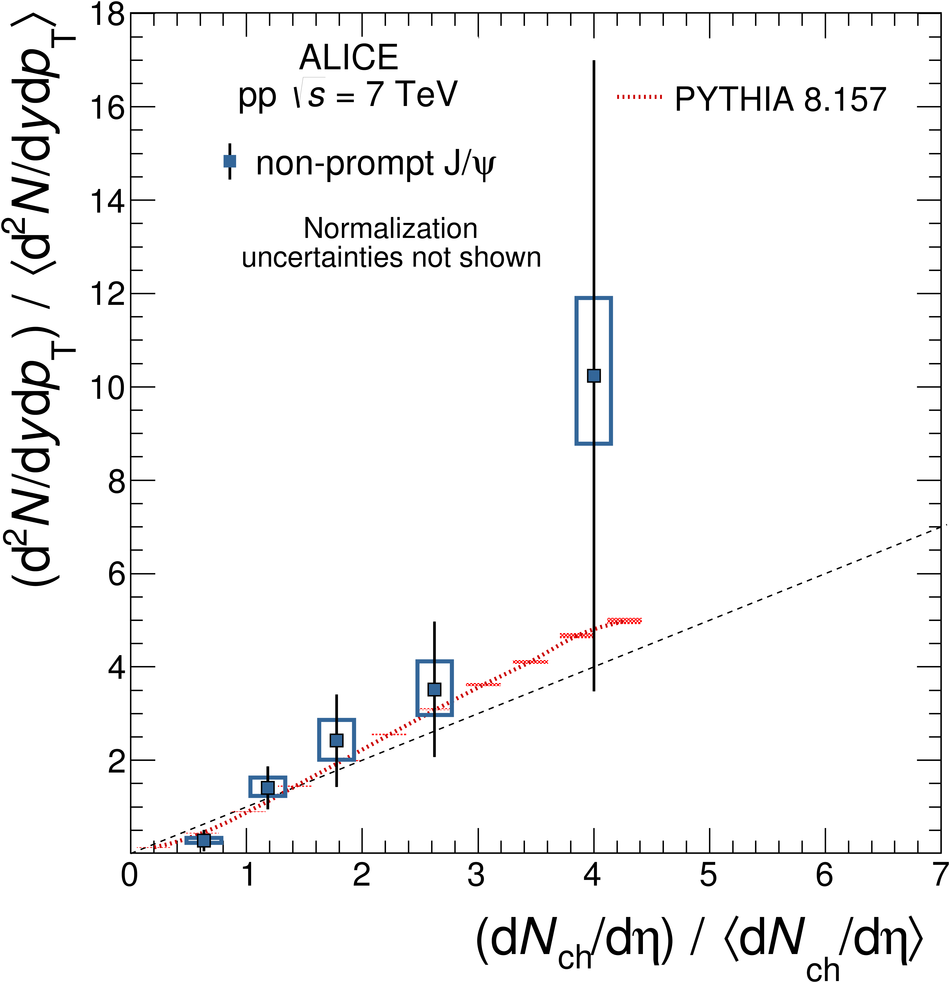Prompt D meson and non-prompt J/$\psi$ yields are studied as a function of the multiplicity of charged particles produced in inelastic proton-proton collisions at a centre-of-mass energy of $\sqrt{s}=7$ TeV. The results are reported as a ratio between yields in a given multiplicity interval normalised to the multiplicity-integrated ones (relative yields). They are shown as a function of the multiplicity of charged particles normalised to the average value for inelastic collisions (relative charged-particle multiplicity). D$^0$, D$^+$ and D$^{*+}$ mesons are measured in five $p_{\rm T}$ intervals from 1 to 20 GeV/$c$ and for $|y|< 0.5$ via their hadronic decays. The D-meson relative yield is found to increase with increasing charged-particle multiplicity. For events with multiplicity six times higher than the average multiplicity of inelastic collisions, a yield enhancement of a factor about 15 relative to the multiplicity-integrated yield in inelastic collisions is observed. The yield enhancement is independent of transverse momentum within the uncertainties of the measurement. The D$^0$-meson relative yield is also measured as a function of the relative multiplicity at forward pseudorapidity. The non-prompt J/$\psi$, i.e. the B hadron, contribution to the inclusive J/$\psi$ production is measured in the di-electron decay channel at central rapidity. It is evaluated for $p_{\rm T}>1.3$ GeV/$c$ and $|y|< 0.9$, and extrapolated to $p_{\rm T}>0$. The fraction of non-prompt J/$\psi$ in the inclusive J/$\psi$ yields shows no dependence on the charged-particle multiplicity at central rapidity. Charm and beauty hadron relative yields exhibit a similar increase with increasing charged-particle multiplicity. The measurements are compared to PYTHIA 8, EPOS 3 and percolation calculations.
JHEP 09 (2015) 148
HEP Data
e-Print: arXiv:1505.00664 | PDF | inSPIRE
CERN-PH-EP-2015-091

